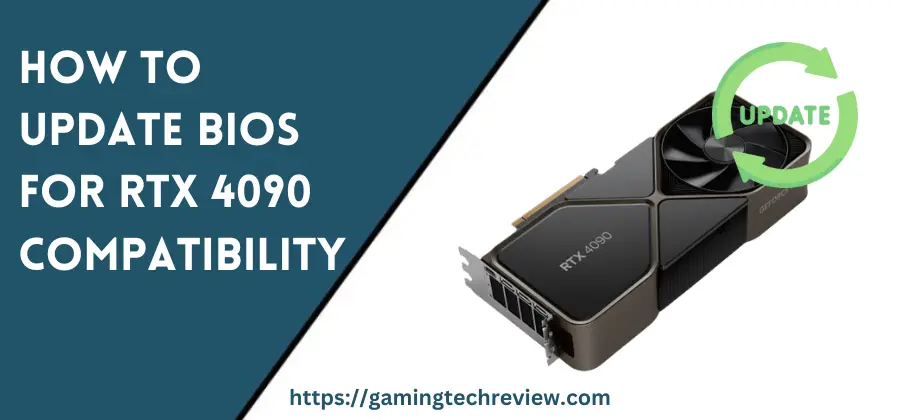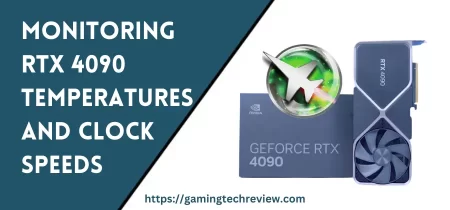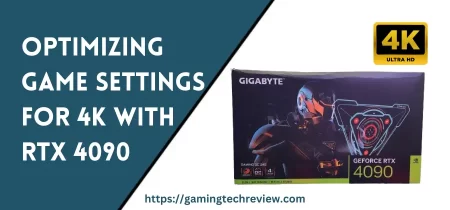
The newly released Nvidia GeForce RTX 4090 graphics card brings exceptional performance and cutting-edge technologies for gaming and creative workloads. However, to take full advantage of the RTX 4090, you may need to update your motherboard BIOS to ensure compatibility. An outdated BIOS can lead to stability issues, performance degradation, and failure to recognize the RTX 4090 entirely. Fortunately, updating the BIOS is a straightforward process that most users can do themselves.
In this comprehensive guide, we’ll walk you through the steps to safely flash your motherboard BIOS for RTX 4090 compatibility. We’ll also discuss the importance of BIOS updates for future-proofing your system.
Understanding BIOS and Why It Needs Updating
The BIOS (Basic Input/Output System) is firmware programmed into your motherboard that initializes components and enables the operating system to load on startup. It acts as an intermediary between the hardware and software, configuring settings to ensure optimal performance.
When new CPUs and GPUs release, they may require code updates in the BIOS to work properly. Without the latest BIOS, your motherboard won’t recognize the RTX 4090, limiting performance and possibly preventing booting entirely. Updating provides the necessary adjustments for compatibility.
Some key reasons you may need a BIOS update for the RTX 4090 include:
- Enabling Resizable BAR support for boosted fps in games
- Improving PCIe lane allocation and bandwidth for the GPU
- Allowing the motherboard to detect and initialize the RTX 4090
- Supporting advanced features like DLSS 3 for AI-enhanced frames
- Resolving potential stability issues caused by outdated BIOS code
- Adding support for faster memory profiles to fully utilize 4090 VRAM
Always check your motherboard manufacturer’s website to confirm if a newer BIOS revision improves recognition and functionality with the RTX 4090.
Checking Your Current BIOS Version
Before updating your BIOS, it’s essential to check your motherboard model and confirm the currently installed version. This ensures you’re upgrading to a newer release and avoiding unnecessary flashing steps.
Here are some ways to check your existing BIOS version on Windows PCs:
- Restart your computer and look for the BIOS version during the manufacturer splash screen.
- In Windows search, type “msinfo32” to open System Information. Look at the BIOS version under System Summary.
- Download your motherboard manufacturer’s monitoring software and check the BIOS version there.
- Enter your motherboard’s UEFI settings screen on startup and look for the BIOS version.
- Navigate to Settings > System > About and check the listed BIOS version.
If you’re running an older BIOS release from 2020 or earlier, updating is strongly recommended for optimal 4090 compatibility. Check your motherboard support site for the latest available version.
Downloading the New BIOS File
Once you’ve determined you need to update, the next step is to download the new BIOS file from your manufacturer. Here’s how:
- On your motherboard manufacturer’s website, find the support page for your specific model.
- Look for the latest BIOS update and download link. Avoid beta versions unless specifically recommended.
- Some brands let you download the file directly, while others require entering your product info first. Follow the prompts to download the correct BIOS file.
- Save the compressed BIOS file such as a ZIP file to your local drive in a convenient location like the Desktop.
- Make note of the exact file name for reference during the flashing process.
- Before updating, read any release notes, instructions, or warnings provided by your manufacturer. Follow their guidance closely.
Downloading directly from your motherboard OEM ensures you’re getting the authentic BIOS rather than an unofficial modified version. The file may be called something like “X570_v2.90_BIOS.zip.”
See Also: How to Choose a UPS Battery Backup for an RTX 3060 Gaming PC
Safely Flashing the BIOS in UEFI
With the new BIOS file ready, it’s time to flash it to the motherboard, overwriting the old version. Take precautions, as an interrupted flashing can brick the motherboard.
Here are some best practices for safe flashing in UEFI:
- Close all programs and shut down Windows fully before flashing. Avoid rebooting into the OS afterward until done.
- Ensure the PSU switch is turned on and plugged into a surge protector. Avoid disconnecting power during the process.
- Have the AC power cord securely connected to avoid loss of power during the flash.
- Use a USB drive formatted to FAT32 and under 16GB in size. Avoid external hard drives and high-capacity drives.
- Connect your boot drive and GPU to enable video output after flashing.
- Only flash via UEFI interface, not through OS software or apps to avoid glitches.
- Avoid overclocking profiles while flashing and load optimized defaults if possible.
- Don’t interrupt the flash process until it finishes 100%. A power outage could brick the board.
- Consult your motherboard manual if you’re unfamiliar with navigating the UEFI screens.
With those tips in mind, here are the general steps to safely flash the BIOS:
- Insert the USB drive containing the BIOS file into a motherboard USB port.
- Restart the computer and enter the UEFI setup utility. The key to press varies but is often Delete, F2 or F10.
- Navigate to the BIOS flash section, often listed under the advanced or tools tab.
- Select the option to update the BIOS from a file on the USB drive.
- On the file selection screen, choose the new BIOS file you downloaded. Double-check the name.
- Follow the confirmation prompts to begin the automated flash process and wait several minutes for it to complete.
- Once finished without error, exit UEFI and allow your system to reboot normally.
- If enabled, you may need to load optimized defaults or reenable XMP memory profiles.
- Verify the new BIOS version on startup to confirm a successful update.
Flashing the motherboard BIOS requires care but following these steps will apply the new firmware safely. Refer to your motherboard manual for model-specific instructions.
Verifying Stability and Full RTX 4090 Compatibility
After successfully flashing the BIOS, it’s crucial to verify stability and compatibility with the RTX 4090. Here are some things to validate:
- Boot into Windows and confirm the system is running normally without any issues.
- Open GPU-Z and verify it detects the RTX 4090 correctly. Run benchmarks to check for performance impacts.
- Check that Resizable BAR is enabled by looking in GPU-Z or Nvidia control panel. If not, enable it in UEFI.
- Run intensive games and benchmarks like 3DMark on the RTX 4090 and watch closely for stability problems.
- Monitor temperatures, clocks speeds, voltages, and fans on the 4090 for any abnormalities during load.
- If you experience crashes, boot failures, or odd behaviors, you may need to tweak UEFI settings or re-flash the BIOS.
While inconvenient, going through the verification and troubleshooting steps helps ensure your new BIOS fully supports the capabilities of the RTX 4090. Refer to your GPU and motherboard manuals for tips if necessary.
Updating BIOS for Future Compatibility
In conclusion, updating your motherboard BIOS now paves the way for proper RTX 4090 operation and also future-proofs your system. New GPUs and CPUs will eventually require more recent BIOS versions beyond the current one for your board.
Flashing early provides assurance down the road in several ways:
- You won’t need to scramble updating the BIOS when future components like next-gen GPUs release. Doing it now gets it out of the way.
- The board avoids becoming obsolete down the line or limiting your next upgrade path.
- Processor support lists can expand on newer BIOS versions as vendors refine code post-launch.
- Even if you don’t plan on getting a 4000 series card soon, updating now may still patch bugs and add optimizations or features.
- The UEFI interface evolves over time with handy usability tweaks and customization options.
Updating proactively future-proofs your motherboard and prevents compatibility issues with new hardware releases down the road. Following the steps in this guide removes the hassle of incompatible components and enables your PC to evolve gracefully via simple BIOS updates. With game-changing technologies like RTX 4000 pushing boundaries, a refreshed BIOS paves the way to fully maximize their potential.










